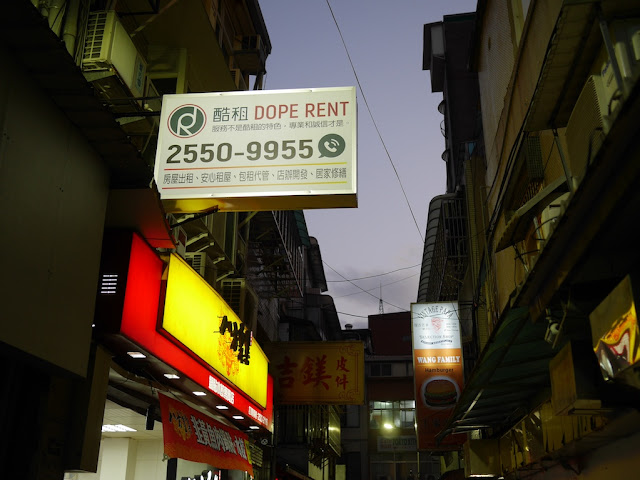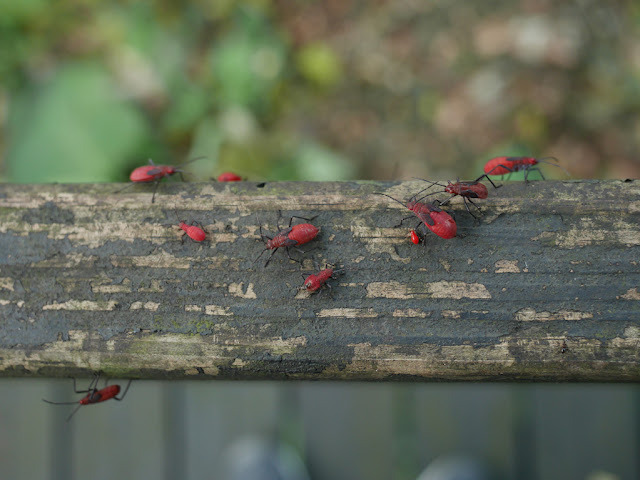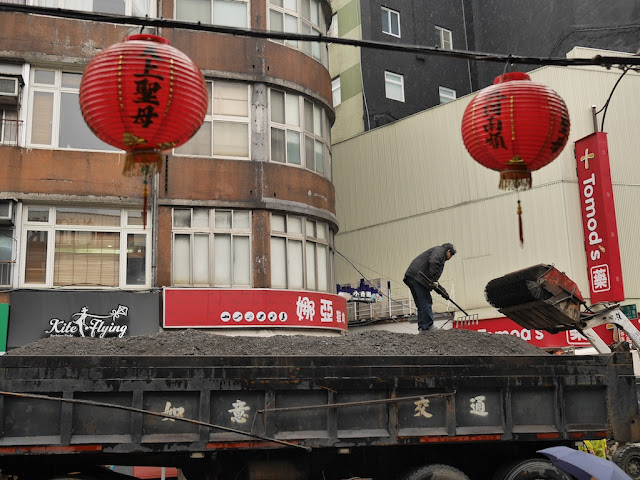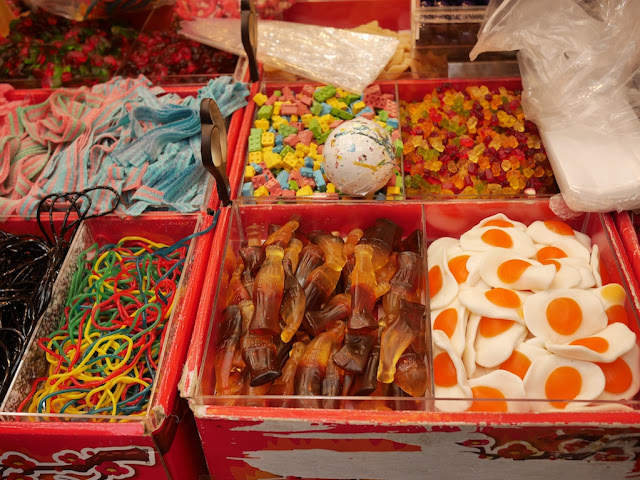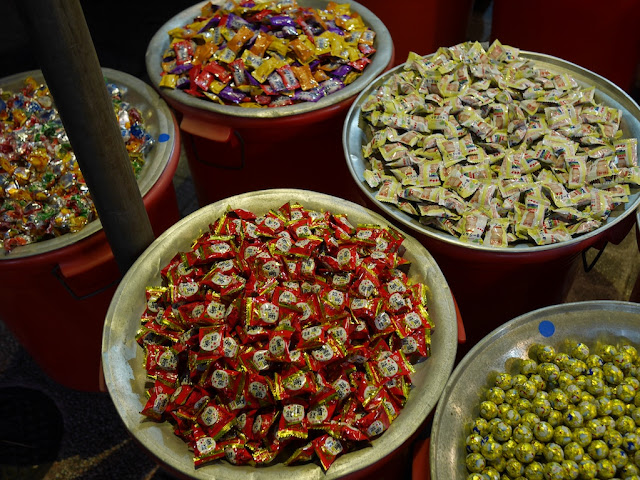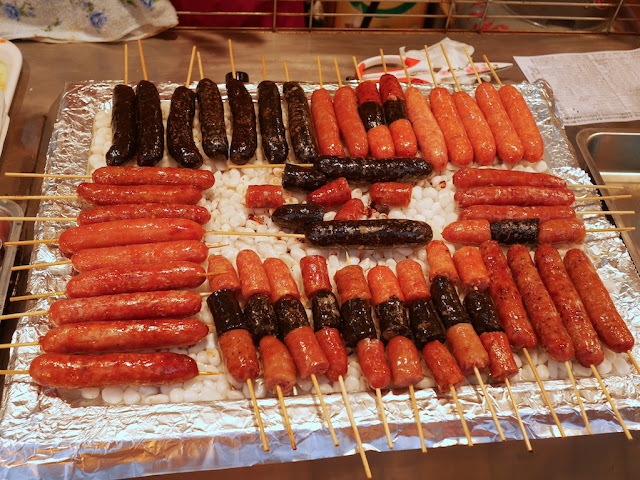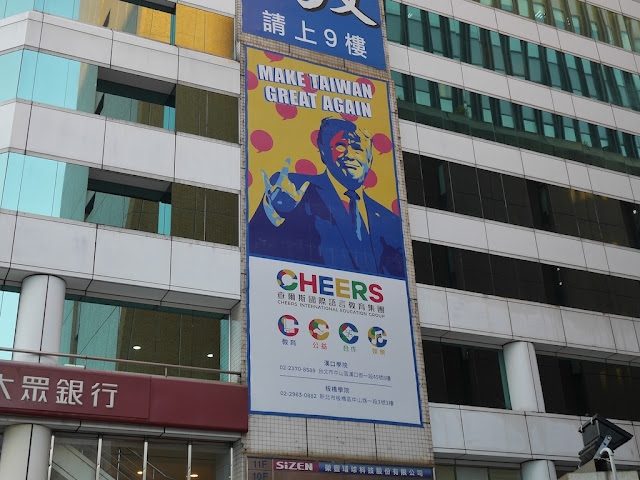 |
| One of the main entrances to the Taipei Lunar New Year Festival on Dihua Street |
Dihua Street runs through Dadaocheng, a section of Taipei dense with visible history. According to a
government tourist website:
In late 1880s, Dadaocheng started to prosper in light of the opening of Tamsui Harbor. It has since become the keystone of economic and cultural development. In Dadaocheng, you will see extravagant Baroque architecture, traditional Hokkien bungalows and brilliant red-brick western houses. Historical buildings, traditional folklore center, tea houses, fabric stores, Chinese pharmacy and local eateries alike are rich in history. A new everyday-aesthetics derives in the vintage neighborhoods of Dadaocheng where century-old stores meet with contemporary innovation.
And at the moment, there's another reason to visit Dihua Street. It is
one of the locations for this year's Taipei Lunar New Year Festival:
The Dihua New Year's Goods shopping street will be in place from February 1st to 14th, featuring hundreds of stands selling classic or trendy items. There will be 15 food trucks at Yongle Plaza during the period as well. On weekends, chefs are invited to demonstrate how they prepare New Year's dishes, and visitors can also pour their emotions and creativity into making red envelopes and New Year’s banners. Vintage style clothing and cute dog costumes are also available for people to take fun photos with, sitting in front of an AR technology backdrop. This year's festival has been expanded to Ningxia Night market, Taipei Station Wholesale Market, Rongbin Shopping District and Taipei City Mall, immersing visitors from all places in the lively, colorful Chinese New Year experience in Taipei.
When I visited Dihua Street last Thursday afternoon, what most caught my attention early on were the very dense crowds, all the more striking considering it was a cold overcast weekday afternoon and rain had been forecasted.
This made me wonder what it would be like on a weekend day with good weather.
In comparison to
past Lunar New Year Fairs in Hong Kong I've attended, there appeared to be more of an emphasis on the traditional items people commonly buy for celebrating the Lunar New Year, making it more distinct from a regular night market, common in Taiwan. In that spirit, some of the sellers wore traditional clothing.
I didn't see anybody wearing a dog costume, though, fitting for the upcoming Year of the Dog. But I see someone wearing a Cheshire Cat outfit.
As usual for the Lunar New Year, candy was a common item for sale and a great number of varieties were available.
I tried one of the chocolate coins, something familiar from my own childhood, and I'll just say after the first taste I had no desire to finish it. The cheap Italian chocolates, many with liquor fillings, sold at the same stand were significantly better.
I also took advantage of the the many food vendors there.
Sure, black cuttlefish sausages aren't specifically a Lunar New Year treat, but I don't come across them often (the one place which comes to mind is a long metro ride away in Tamsui, though I assume there are closer options). And how can you ignore somebody waving a giant cuttlefish sausage?
As it started to get darker around 5 p.m. the crowds thinned slightly and it was easier to explore the various stands.
But things seemed to pick up later on, though still not as busy as the afternoon.
There's much more to see (and eat) than what I have shared here. So if you can, head on over to Dihua Street before the festival ends on February 14. It's an opportunity to immerse yourself in a bit of history while enjoying the Lunar New Year festivities. You won't be alone.

